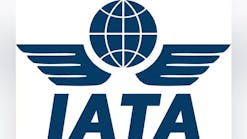OAG has been powering the growth and innovation of the air travel ecosystem since 1929. Every day OAG receives more than 120,000 changes to its schedules database and nearly 160,000 flight status updates.
The frequency and volume of data OAG receives from airlines and airports is growing at a significant rate and consequently the value of understanding and ingesting this information quickly and effectively is rising – no more so than within airline and airport operations and the ancillary services which serve the traveler.
Every flight status record (OAG handled 58 million+ records last year) has multiple elements of data, tracking each flight from pushback through to “chocks on,” constantly being updated and refreshed as the flight reaches its final destination.
Punctuality, or on-time performance (OTP) matters more than ever, and with value of this data and insight rising, OAG delves into the value this can add to ground support operators and services.
What is On Time?
It’s true, every second counts.
An airline departure or arrival that is considered to be on time has a departure or arrival that occurs within 15 minutes of the scheduled time. The measurement and publication of data about on-time performance acts as a powerful key performance indicator (KPI) for airlines and airports, and it is also a potential service differentiator for marketing the product to air travelers.
Real-Time Data Provides a ‘Common Truth’ For All
With so little room to maneuver – both in the skies above and on the ground below – airport, airlines and airside operators depend on real-time flight status data to deconstruct the departure process, analyze problems and optimize services in real-time.
It has become a central part of the operation for many airlines, airports and aviation related companies. Transport suppliers, catering companies, government agencies, hoteliers, cruise companies, information service providers, fueling companies and probably another 30 or 40 travel related activities rely on real-time flight status data to plan their resources on a day to day basis.
When Accuracy and Speed Matter
Sequencing Arriving Aircraft
Airlines use flight status data to prioritize the sequencing of arriving aircraft from long-haul flights into their hub to ensure that those aircraft arriving late can be prioritized for arrival ahead of early arriving flights. Subsequent short-haul connecting services can then, on occasion, be held for connecting passengers rather than incurring a delay and re-accommodation cost to the airline.
Resource Management
Flight status data is used increasingly by airport suppliers, especially those working directly on aircraft turnarounds. We have all seen catering trucks, bowsers and ramp staff waiting for a late aircraft to arrive on stand; for some, it can be the first sign of the flight arriving. However, multiply those wait times over a day and the cost can be very expensive.
Access to reliable real-time flight status information allows suppliers to allocate resources “just in time,” which can lead to significant cost savings for suppliers and customers alike.
Fuel Cost Mitigation
Arriving early can be beneficial for many. But when the arriving airport has no spare gate capacity, such arrivals can result in frustration as aircraft hold and wait for a gate to become available.
Early insight into expected arrival times can both allow airlines to slow down their arrival to an on-time rather than early status, saving fuel burn en route. That early insight can also alert airports to the need to pushback aircraft earlier, releasing that valuable air bridge for the next arriving service.
Clear visibility of expected arrival times can make or break a whole day of flying for some airlines. Early awareness of late arriving aircraft can prevent sudden gate changes at major hub airports, which in turn avoids late reporting passengers and subsequent onward flight delays. A 20-minute flight delay can frequently be recovered when all stakeholders and ground handling parties are forewarned and able to plan and adjust resources accordingly.
Maintenance and Equipment Efficiencies
Ground handling equipment is expensive, and it requires moments of high usage followed by occasionally lengthy periods of inactivity. Maximizing the use of such equipment and ensuring it is in the right place at the right time requires planning and effective communication every day. Reacting to flight delays can challenge such plans.
Advance notice of flight delays and gate changes can allow for ramp equipment and supporting services to both move in time and be used effectively throughout the day.
Implications for the Service Value Chain
A severe thunderstorm at a major airport with many passengers connecting to several cruise ships departing in the next few hours potentially creates a significant disruption event.
If passengers miss their departing cruises, additional hotel accommodation may be required, onward transportation arranged or, indeed, depending on the length of delay the cruise company may merely delay departing. Flight status information in such context is hugely valuable to all parts of the product and service chain when such events occur. The insights provided allow for cost effective commercial decisions to be made that can literally save thousands of dollars a day for some companies.
Early Decision Making and Better Operational Planning
In an industry with low operating margins for many, analyzing data and improving operational efficiency is crucial, and analyzing flight status on an ongoing basis is proving to be a margin game-changer.
By monitoring flight status performance, airports can identify those flights and connections that regularly challenge minimum connecting times and seek to either adjust gate allocations to improve connectivity, work with control authorities to improve passenger flows or in some cases seek support from airlines to adjust their schedules to meet the connection.
Larger airlines, airports and indeed ground handling suppliers are increasingly using on-time performance dashboards that show the relative performance of a cluster of airports or airlines on a daily, weekly or monthly basis.
This enables effective disruption management but also provides accurate operational information to identify efficiency opportunities.
Such insights have proven to be essential for supply companies looking at potential RFP responses when seeking to understand the detail of the operation and the real (rather than scheduled) activity of a potential new client.
And of course, from a competitive perspective, the insights that such awareness can provide to an airport around its competitors, its own suppliers and airlines provides a remarkable basis for valuable constructive discussion around all aspects of the airport operation.
Understanding and using flight status data not only allows you to review performance and learn from it. Monitoring real-time data now means outcomes can be affected on the day, better decisions made, disruptions managed and, ultimately, better service delivery and cost efficiency.
John Grant’s analysis has been featured in major publications including CNN, USA Today, BBC, the Financial Times, TIME and more. Grant captures and analyzes complex aviation data and industry trends to provide commentary on what’s driving changes in the travel market. He’s served as a featured speaker at major industry events including the CAPA Americas Aviation Summit, the CAPA World Aviation Summit, the Routes Online Strategy Summit and more. Grant previously managed and worked to enhance OAG’s product portfolio and new product development.






